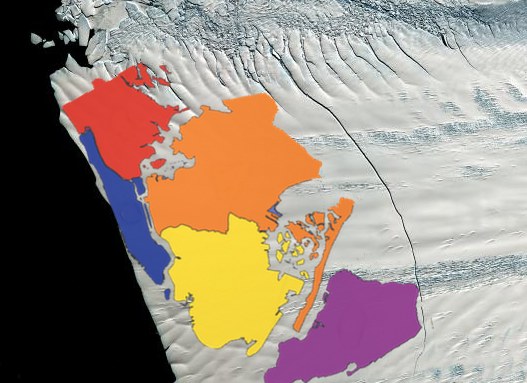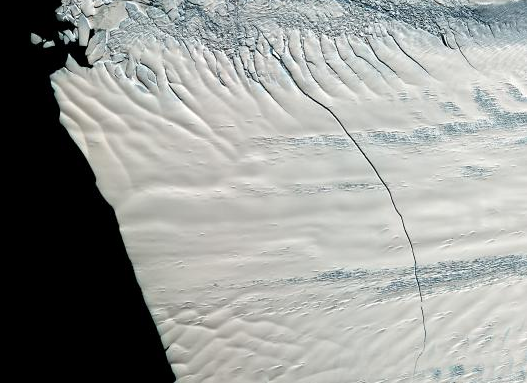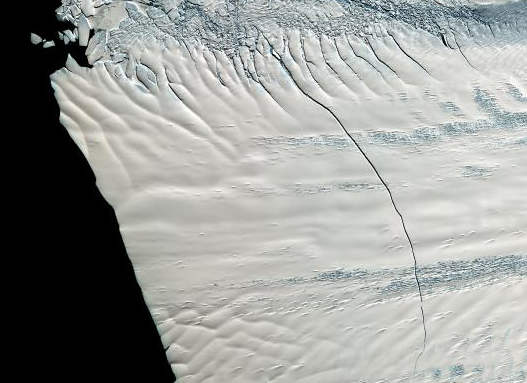Normally when icebergs split off from glaciers, it’s called “calving,” but I think it would be fair to say that Antarctica’s Pine Island Glacier is about to have a cow. Pine Island Glacier, which is the continent’s fastest-melting glacier and unusually well-situated to contribute to sea level rise, is getting set to shed a chunk of ice larger than all five boroughs of New York City combined.
Snaking across the floating tongue of the Pine Island Glacier in West Antarctica, the crack is expected to create an iceberg 350 square miles (907 square kilometers)—versus 303 square miles (785 square kilometers) for Manhattan, Brooklyn, Queens, Staten Island, and the Bronx combined, according to NASA.

A NASA map of the crack across Pine Island Glacier, with New York City thrown in for scale. (I had to move Staten Island a little.)
Glaciers cough up icebergs all the time. but the one that’s fixing to break off Pine Island is unusual in a couple of ways. One, it’s MOTHERFUCKING HUGE, but actually that’s not that weird — a glacier on the eastern side of Antarctica spawned an iceberg the size of Luxembourg a couple years ago. Two, it’s breaking off unusually far upstream, which indicates underlying changes in the region’s ice. And three, Pine Island Glacier is important for preventing sea-level rise:
“West Antarctica has ice streams, of which Pine Island is one. Those are fast-flowing streams of ice,” said [oceanographer Doug] Martinson, who specializes in polar oceans.
When ice breaks off the Pine Island Glacier, he said, more ice can flow in faster from the mountains above—ice that will eventually wind up contributing to sea level rise.
So Pine Island is kind of the goalie of western Antarctica, and it’s about to lose a lot of blocking power.




